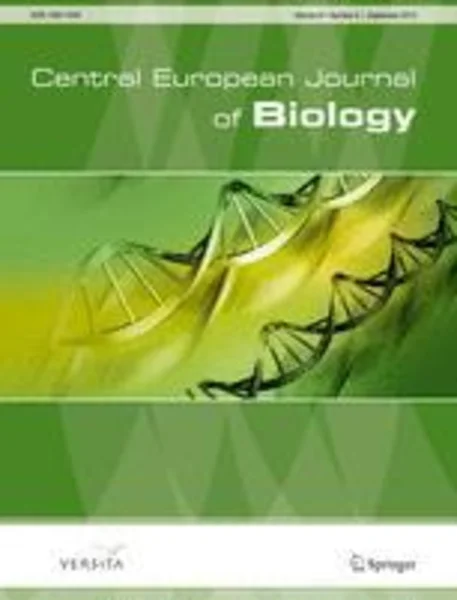-
plant-pathogen interactions during infection process of asparagus with fusarium spp.
جزئیات بیشتر مقاله- تاریخ ارائه: 1392/07/24
- تاریخ انتشار در تی پی بین: 1392/07/24
- تعداد بازدید: 782
- تعداد پرسش و پاسخ ها: 0
- شماره تماس دبیرخانه رویداد: -
backgroundasparagus officinalis l. is often infected by fungi from the fusarium genus which also contaminate the plant tissues with highly toxic secondary metabolites. to elucidate the plant-pathogen interactions between asparagus and fusarium oxysporum or f. proliferatum, a fungal mycotoxins profile was assessed together with an impact of the infection on all forms of salicylic acid content.
methodology
fungal isolates were identified by their morphological features, species-specific pcr and transcription elongation factor 1a (tef-1a) sequencing. mycotoxins were assessed by high-performance liquid chromatography (hplc). the salicylic acid and its derivatives content was analyzed by the hplc method combined with fluorometric detection. the levels of free radicals were measured by electron paramagnetic resonance (epr).
results
after infection both fusarium pathogens formed fumonisin b1 and moniliformin. infection altered salicylic acid biosynthesis and conjugation rates both in the roots and stems when compared with non-inoculated plants. samples with higher free radical concentrations in stems showed higher concentrations of all forms of salicylic acid.
conclusions
we postulate that infection by both fusarium pathogens produces mycotoxins, which may be transported to the upper part of plant. pathogen attack initiated a plant defense reaction involving increased salicylic acid levels and resulting in increase in free radical levels.
مقالات جدیدترین رویدادها
-
استفاده از تحلیل اهمیت-عملکرد در ارائه الگوی مدیریت خلاقیت سازمانی و ارائه راهکار جهت بهبود
-
بررسی تاثیر ارزش وجوه نقد مازاد بر ساختار سرمایه شرکت های پذیرفته شده در بورس اوراق بهادار تهران
-
بررسی تأثیر سطح افشای ریسک بر قرارداد بدهی شرکت های پذیرفته شده در بورس اوراق بهادار تهران
-
بررسی تأثیر رتبه بندی اعتباری مبتنی بر مدل امتیاز بازار نوظهور بر نقد شوندگی سهام با تأکید بر خصوصی سازی شرکت ها
-
تأثیر آمیخته بازاریابی پوشاک ایرانی بر تصویر ذهنی مشتری پوشاک ایرانی (هاکوپیان)
-
تغییرات شاخص کاویتاسیون در تخلیه کننده تحتانی شماره 3 سد سفیدرود در حالت هوادهی شده و هوادهی نشده به کمک fluent
-
نقش خانواده در اقتصاد مقاومتی
-
بررسی عوامل موثر در وفاداری به برندهای داخلی در صنعت پوشاک از منظر اقتصاد مقاومتی
-
مدل سازی راهبری شرکتی بر اجتناب مالیاتی و خطر سقوط قیمت سهام با استفاده از الگوی لاجیت
-
بررسی صنعت تشبیه و همانندسازی در سیر آثار و اشعار نزار قبانی
مقالات جدیدترین ژورنال ها
-
مدیریت و بررسی افسردگی دانش آموزان دختر مقطع متوسطه دوم در دروان کرونا در شهرستان دزفول
-
مدیریت و بررسی خرد سیاسی در اندیشه ی فردوسی در ادب ایران
-
واکاوی و مدیریت توصیفی قلمدان(جاکلیدی)ضریح در موزه آستان قدس رضوی
-
بررسی تاثیر خلاقیت، دانش و انگیزه کارکنان بر پیشنهادات نوآورانه کارکنان ( مورد مطالعه: هتل های 3 و 4 ستاره استان کرمان)
-
بررسی تاثیر کیفیت سیستم های اطلاعاتی بر تصمیم گیری موفق در شرکتهای تولیدی استان اصفهان (مورد مطالعه: مدیران شرکتهای تولیدی استان اصفهان)
-
بررسی تاثیر کالبد و کارکرد فضاهای ورودی شهر در ایجاد حس دعوت کنندگی شهروندان نمونه موردی ورودی های شرق شهر تهران
-
بررسی اثر نوع و غلظت امولسیون کننده های خوراکی بر پایداری محلول دهانشویه با رویکرد طراحی آزمایش
-
بررسی تاثیر اینترنت اشیاء بر حمل و نقل در کلان شهرها
-
بررسی قیمت نفت و تولید ناخالص داخلی و انتشار دی اکسید کربن و رابطه سیستماتیک رشد اقتصادی با مصرف انرژی تجدیدناپذیر در کشورهای اسلامی عضو اوپک
-
بررسی رابطه سرمایه نمادین ایرانی – اسلامی با سرمایه فکری




سوال خود را در مورد این مقاله مطرح نمایید :